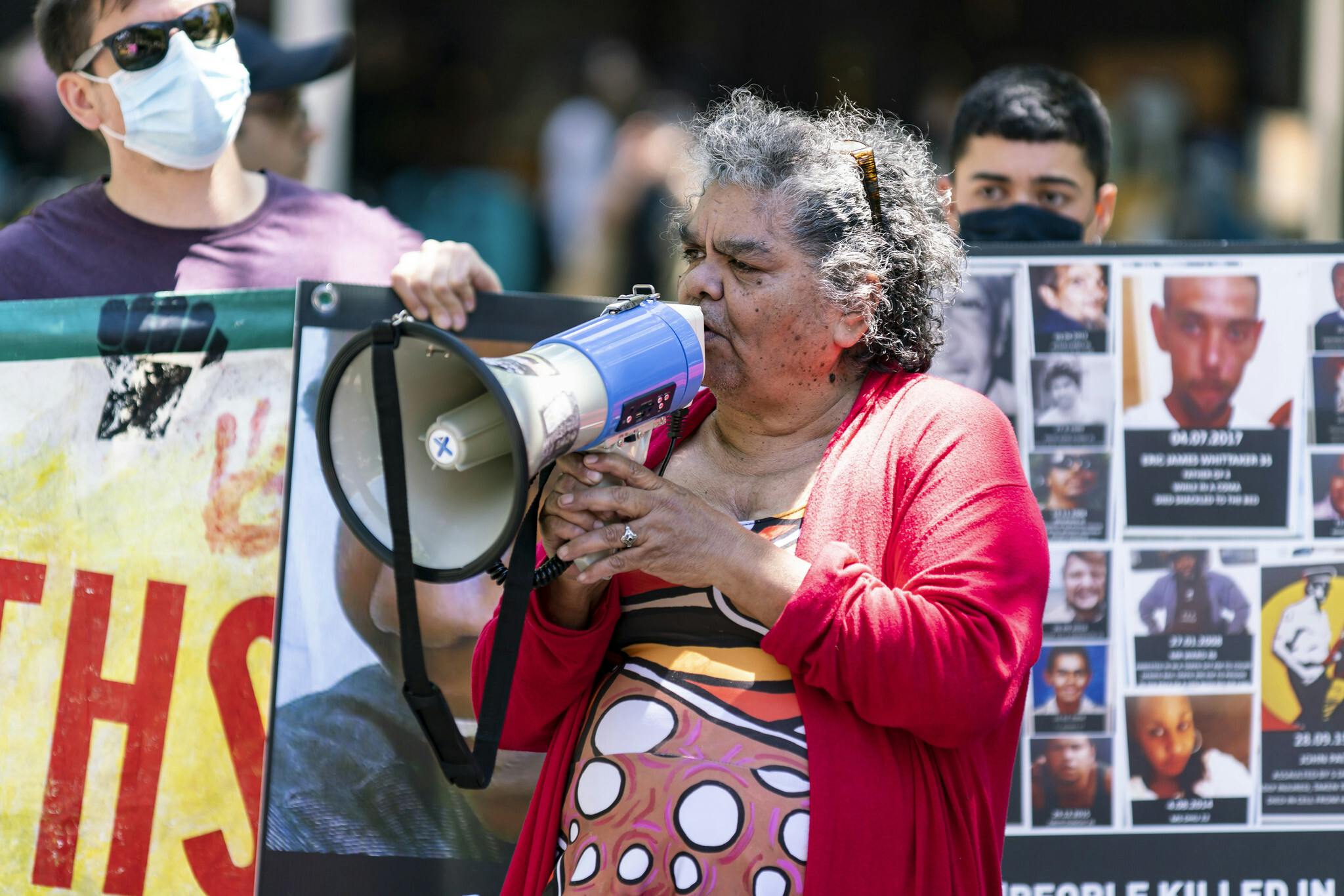Speaking out against deaths in custody shame

Around 150 people gathered on 3 December at Melbourne’s State Library for a snap rally to protest two recent deaths in custody. On 29 November, a 30-year-old woman in Victoria died in hospital after being transferred from the Dame Phyllis Frost Centre, a high-security women’s prison in Victoria. The next day, a 44-year-old woman died in Townsville Women’s Correctional Centre. By the time the ambulance arrived, it was too late.
“We’re here today for Heather, [and] her poor little children left without a mother”, Aunty Rea from Grandmothers Against Removals told the crowd, many of who held placards calling prison a death sentence for Indigenous people. The rally was organised by the victim’s family.
On Thursday, the Australian Institute of Criminology released its annual deaths in custody report, recording 82 deaths over the last year. Just last month, 43-year-old Glen Francis died in Maryborough Correctional Facility in Queensland, a 26-year-old Aboriginal man died in a Newcastle prison, and 45-year-old Gomeroi man Stanley Russel was shot by police in his own home in Sydney. In January last year, Veronica Nelson also died in Dame Phyllis Frost Centre after asking for medical attention more than 10 times in the hours before her death.
In June, an inquest into the 2017 death of Raymond Noel Lindsay Thomas found he was killed in a car crash while trying to escape police chasing him at 130 kilometres an hour. The fatal chase was initiated, according to police, because Thomas’ car looked “dodgy”.
In the 30 years since the Royal Commission into Aboriginal Deaths in Custody, at least 485 Aboriginal people have died in custody. Its final report, released in 1991, made 339 recommendations for preventing such deaths. At least a third of the recommendations have still not been implemented.
Deaths in custody are preventable. They’re the result of unjustified and dangerous police pursuits, excessive force, denial of medical care and criminal neglect. Yet no-one is held accountable.
Just one day after celebrating National Close the Gap Day, the Victorian government announced its plans to further expand the capacity of Dame Phyllis Frost Centre, the high security women’s prison where most Indigenous women prisoners in Victoria are sent. According to the Homes Not Prisons campaign, this expansion will include two new 20-bed “Management Units” for solitary confinement. National Indigenous Times reported this is just one of seven new prison construction announcements made by the government in the past 18 months.
The Royal Commission’s 1991 report recommended “imprisonment should be utilised only as a sanction of last resort”. Thirty years later, the racist over-policing of Indigenous people continues, and Indigenous Australians remain the most incarcerated people on earth. The introduction of mandatory sentencing, and the tightening of parole laws has disproportionately increased the rate of Indigenous incarceration, especially among women. Despite only making up about 2 percent of the overall population, Indigenous people are 28 percent of Australia’s prison population. Indigenous women make up 34 percent of Australia’s prison population.
Friday’s snap rally was a reminder that behind these statistics are communities torn apart and far too many lives cut short. But amid the grief, the determination to continue fighting for justice shines through. As veteran Gooniyandi activist Viv Malo put it, “We must speak out”.